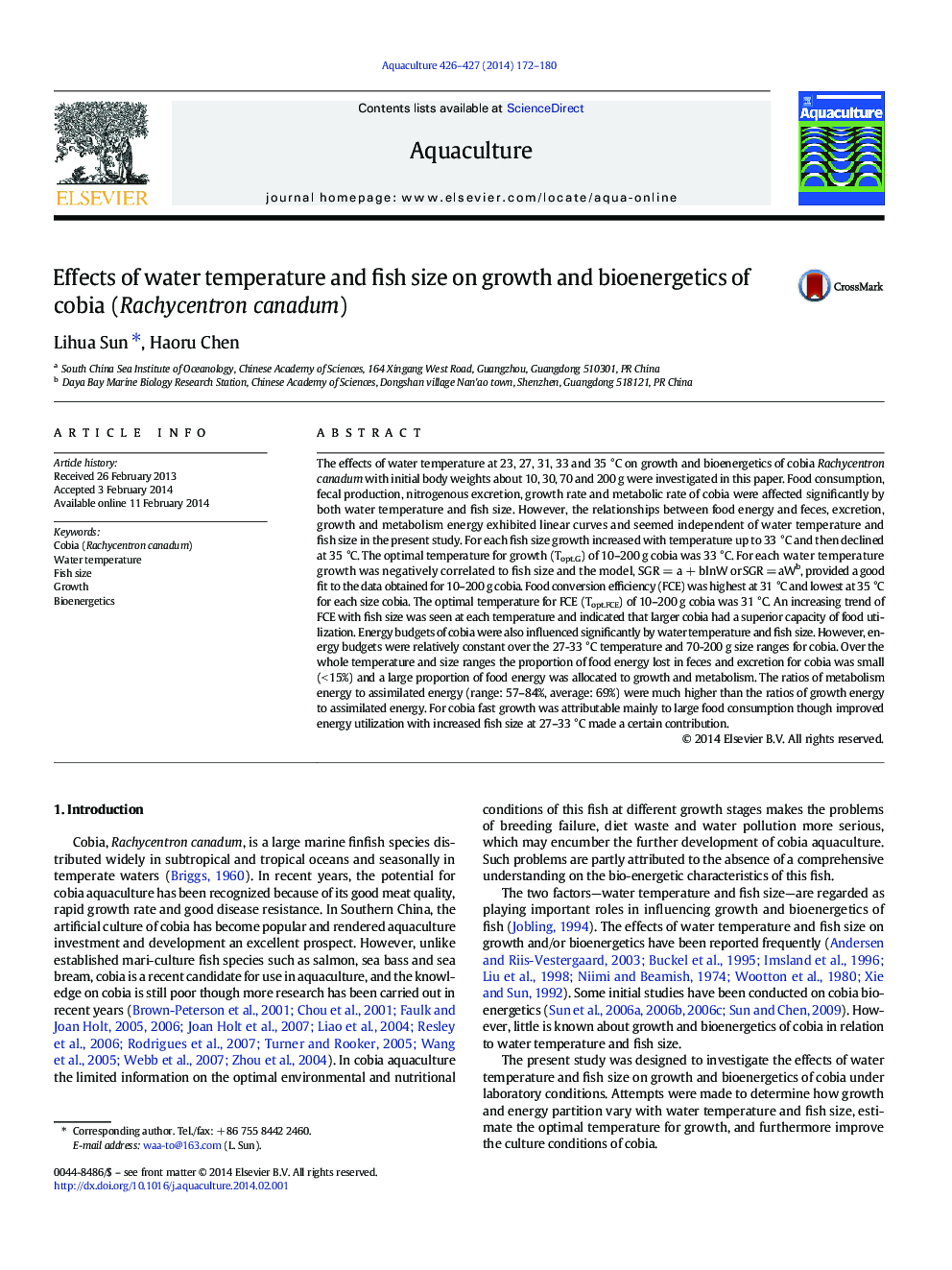| Article ID | Journal | Published Year | Pages | File Type |
|---|---|---|---|---|
| 8495192 | Aquaculture | 2014 | 9 Pages |
Abstract
The effects of water temperature at 23, 27, 31, 33 and 35 °C on growth and bioenergetics of cobia Rachycentron canadum with initial body weights about 10, 30, 70 and 200 g were investigated in this paper. Food consumption, fecal production, nitrogenous excretion, growth rate and metabolic rate of cobia were affected significantly by both water temperature and fish size. However, the relationships between food energy and feces, excretion, growth and metabolism energy exhibited linear curves and seemed independent of water temperature and fish size in the present study. For each fish size growth increased with temperature up to 33 °C and then declined at 35 °C. The optimal temperature for growth (Topt.G) of 10-200 g cobia was 33 °C. For each water temperature growth was negatively correlated to fish size and the model, SGR = a + blnW or SGR = aWb, provided a good fit to the data obtained for 10-200 g cobia. Food conversion efficiency (FCE) was highest at 31 °C and lowest at 35 °C for each size cobia. The optimal temperature for FCE (Topt.FCE) of 10-200 g cobia was 31 °C. An increasing trend of FCE with fish size was seen at each temperature and indicated that larger cobia had a superior capacity of food utilization. Energy budgets of cobia were also influenced significantly by water temperature and fish size. However, energy budgets were relatively constant over the 27-33 °C temperature and 70-200 g size ranges for cobia. Over the whole temperature and size ranges the proportion of food energy lost in feces and excretion for cobia was small (< 15%) and a large proportion of food energy was allocated to growth and metabolism. The ratios of metabolism energy to assimilated energy (range: 57-84%, average: 69%) were much higher than the ratios of growth energy to assimilated energy. For cobia fast growth was attributable mainly to large food consumption though improved energy utilization with increased fish size at 27-33 °C made a certain contribution.
Related Topics
Life Sciences
Agricultural and Biological Sciences
Aquatic Science
Authors
Lihua Sun, Haoru Chen,
